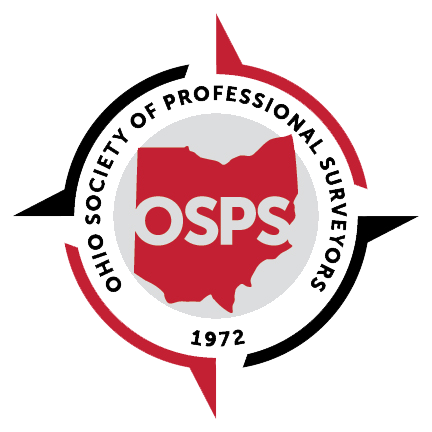Complete Story
03/22/2021
State Board Announces Modifications to Requirements for Professional Surveyor Licensure
The Ohio State Board of Registration for Professional Engineers and Surveyors has adopted changes to the requirements for professional surveyor licensure. The changes include allowing applicants to use part-time experience, allowing up to two years of overlapping engineering and surveying experience and changes to the degree requirements to take the NCEES surveying exams.
The Board, along with the Professional Land Surveyors of Ohio [PLSO] and the County Engineers Association of Ohio [CEAO], established a task force to study the surveying profession in Ohio and to make recommendations to the Board on how the State of Ohio could increase the number of individuals pursuing professional surveyor registration and increase opportunities for individuals to pursue surveying as a profession without diminishing the licensing requirements. The task force was made up of individuals and professional surveyors representing various segments of the surveying profession, including academia, the private sector [both large and small firms], and surveyors employed by government agencies and elected county engineer’s offices. The Board recognizes that ensuring that Ohio has enough surveyors to protect Ohio’s homeowner’s and business owner’s property rights is vital to public protection. Professional surveyors play an important role in land development and maintaining the accuracy of land divisions and property boundaries.
The proposed changes will also increase opportunities for professional engineers to pursue professional surveyor licensure and widen the pool of candidates eligible to serve as Ohio’s elected county engineers, which requires dual registration as a professional engineer and professional surveyor in order to perform their statutory duties.
The Board adopted the following recommendations:
1. Part-time Surveying Experience
The Board will allow an applicant applying for surveying licensure to claim part-time surveying experience providing it is progressive in nature and demonstrates that the applicant is applying surveying principles in their daily work and the work is of a nature that demonstrates the applicant may be placed in charge of surveying work. Part-time work may be accepted under the following conditions:
- Eligible part-time experience must have been completed after the applicant has completed their first surveying course towards an acceptable surveying degree.
- Part-time experience must be completed in increments of no less than 4 hours per week.
- Part-time experience can be counted up to a maximum of 2 years of the 4-year experience requirement.
- Part-time experience must have been completed within the preceding 8 years.
- Part-time experience must be described on a form furnished by the Board.
- Applicants claiming part-time experience must provide documentation verifying completion. The Board will require each of the following: daily/weekly work logs, weekly pay stubs and W2 tax form for the periods of time that part-time experience is claimed.
- Part-time experience cannot overlap with other work experience.
- The maximum amount of pre-graduation experience will remain limited to 2 years.
2. Overlapping Engineering and Surveying Experience
The Board will accept up to 2 years of overlapping engineering/experience as follows:
- Experience that is counted towards both engineering and surveying work experience must be separately documented on a form provided by the Board.
- The professional engineer and professional surveyor that supervised the experience must certify that the work was performed on the prescribed form.
- Overlapping engineering/surveying experience must be completed within the preceding 8 years to count towards the experience requirement.
- Overlapping engineering/surveying experience will only be accepted if it was performed in the following categories:
Topographic, Route Surveying, Construction Plans and Construction Layout
Topographic:
To include but not limited to: Data Collection of features on, above or below the surface of the earth; As-builts.
Route Surveying:
To include but not limited to: design and layout, including grading calculations, of Roadway, Railroad, and Utilities (sanitary, storm, waterline). Gas, electric and cable, are not included because there is usually no grading involved in their layout
Construction Plans:
To include but not limited to: Design of site plan, roadway, railroad and Utilities (Sanitary, Storm and Waterline), Converting plans to machine control, stakeout plans
Construction Layout:
To include but not limited to: Site development, roadway construction, coordinate and elevation determinations (both calculations and layout), angular and linear calculations and layout, 3-D data compilation using GPS or similar methods for construction layout
3. Surveying Education
Ohio law permits two educational pathways towards professional surveyor registration:
- Graduation from an ABET accredited or Board-approved surveying curriculum of four years or more
- Graduation from an EAC/ABET accredited Civil Engineering curriculum of four years or more and completion of 16 semester hours of Board-approved surveying courses.
Based on the task force’s recommendations the Board approved an additional Board-approved surveying curriculum as a pathway to professional surveyor licensure. This pathway will include graduates of any bachelor’s degree program that have completed 30 hours of surveying courses that meets the NCEES Surveying Education Standard, with a limit of 6 hours of the required surveying courses in Geographic Information Systems [GIS]. The required coursework includes:
- 12 hours of Math - College Algebra or higher
- 6 hours of Natural Science
- 16 hours of General Education [English, Humanities, Social Science, etc.]
- 30 hours of surveying courses with a limit of 6 hours in GIS
Applicants that choose this pathway will be permitted to take the NCEES Fundamentals of Surveying [FS] examination after completing all the required courses and obtaining the bachelor’s degree.
These proposed changes will expand opportunities for individuals to pursue professional surveyor registration and ensure that Ohio maintains qualified professional surveyors to protect the public.
More information can be found on the Board’s website – www.ohiopeps.gov.

